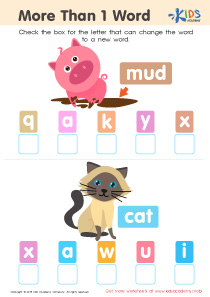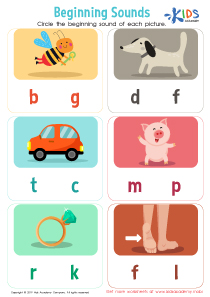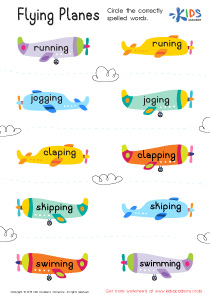Vocabulary expansion Two Letter Phonics Worksheets for 7-Year-Olds
5 filtered results
-
From - To
Enhance your child's vocabulary with our engaging Two Letter Phonics Worksheets, specially designed for 7-year-olds! These interactive worksheets focus on developing phonemic awareness by introducing short, two-letter words. Students will unlock new vocabulary while practicing essential reading skills, engaging them in fun exercises that promote learning through play. Our user-friendly worksheets are crafted to suit varying skill levels, ensuring that each child is challenged and supported as they master phonics. Perfect for at-home learning or classroom activities, these resources are sure to boost confidence and encourage a love for reading. Start your child's language journey today with our phonics worksheets!


Blending Consonants: "Fl", "Bl" and "Gl" Printable
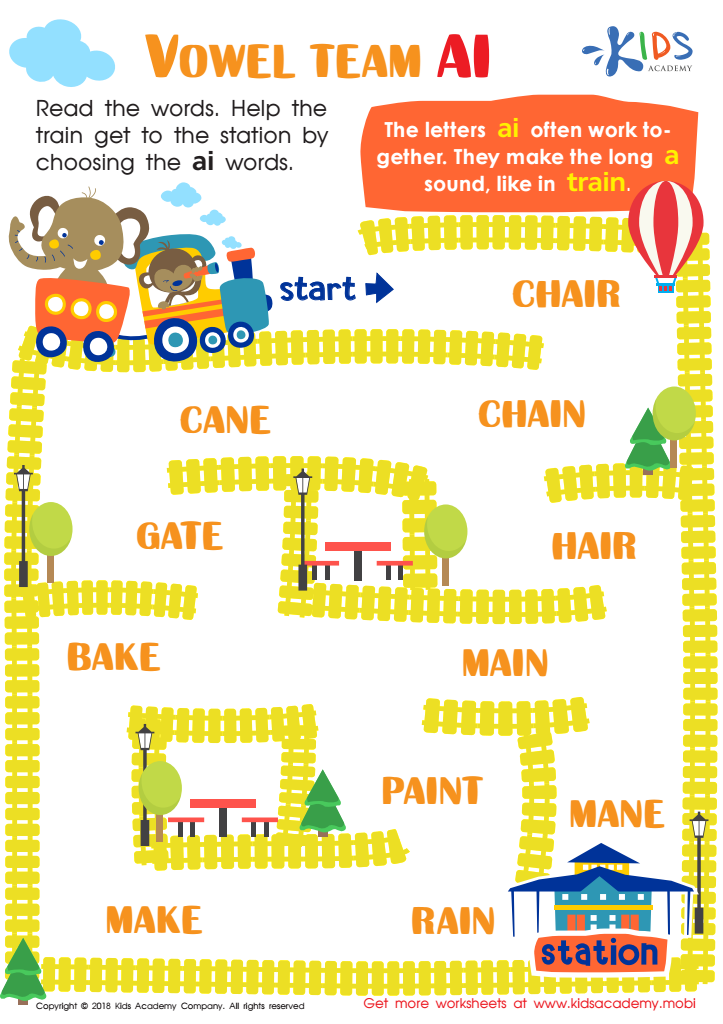

Vowel team ai Worksheet


Two Sounds for OO Worksheet


Missing Digraph: Part 2 Worksheet
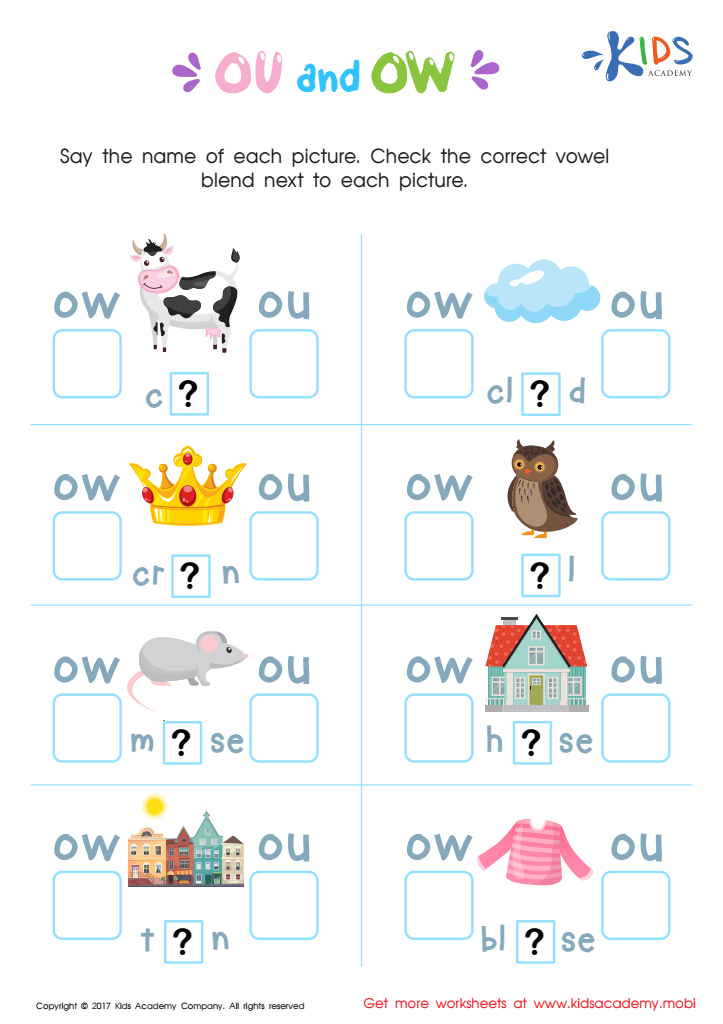

OU and OW Words Worksheet
Vocabulary expansion through Two Letter Phonics is crucial for 7-year-olds as it lays the foundational skills necessary for effective communication and literacy. At this age, children are eager to learn and explore language, making it an ideal time to introduce phonics principles that identify letter combinations and their sounds. Understanding two-letter phonics helps children decode words more easily, enhancing their reading fluency and comprehension.
Moreover, a strong vocabulary enriches a child's ability to express thoughts and emotions adequately. Engaging with two-letter phonics expands their word bank, empowering them to articulate ideas more confidently. This is especially significant for ensuring success across various subjects, as language skills are vital for understanding concepts in maths, science, and social studies.
Additionally, as children master two-letter phonics, it fosters a sense of accomplishment and boosts their self-esteem. This positive reinforcement motivates them to pursue reading and writing activities deliberately, sustaining a lifelong passion for learning. Parents and teachers, armed with this understanding, can focus on incorporating vocabulary expansion activities into daily routines through games, reading, and interactive discussions, ultimately guiding children toward a successful linguistic future.

 Assign to My Students
Assign to My Students






